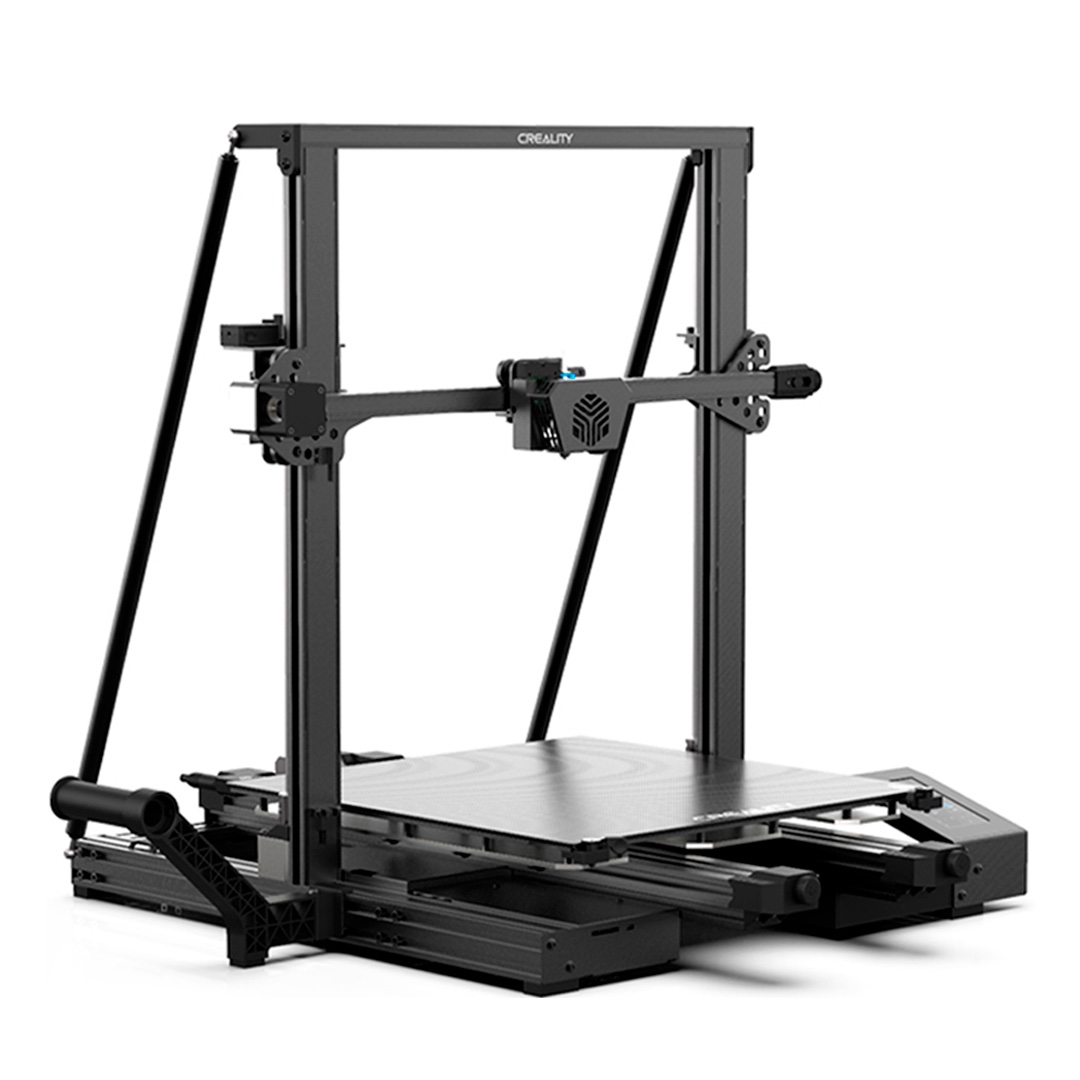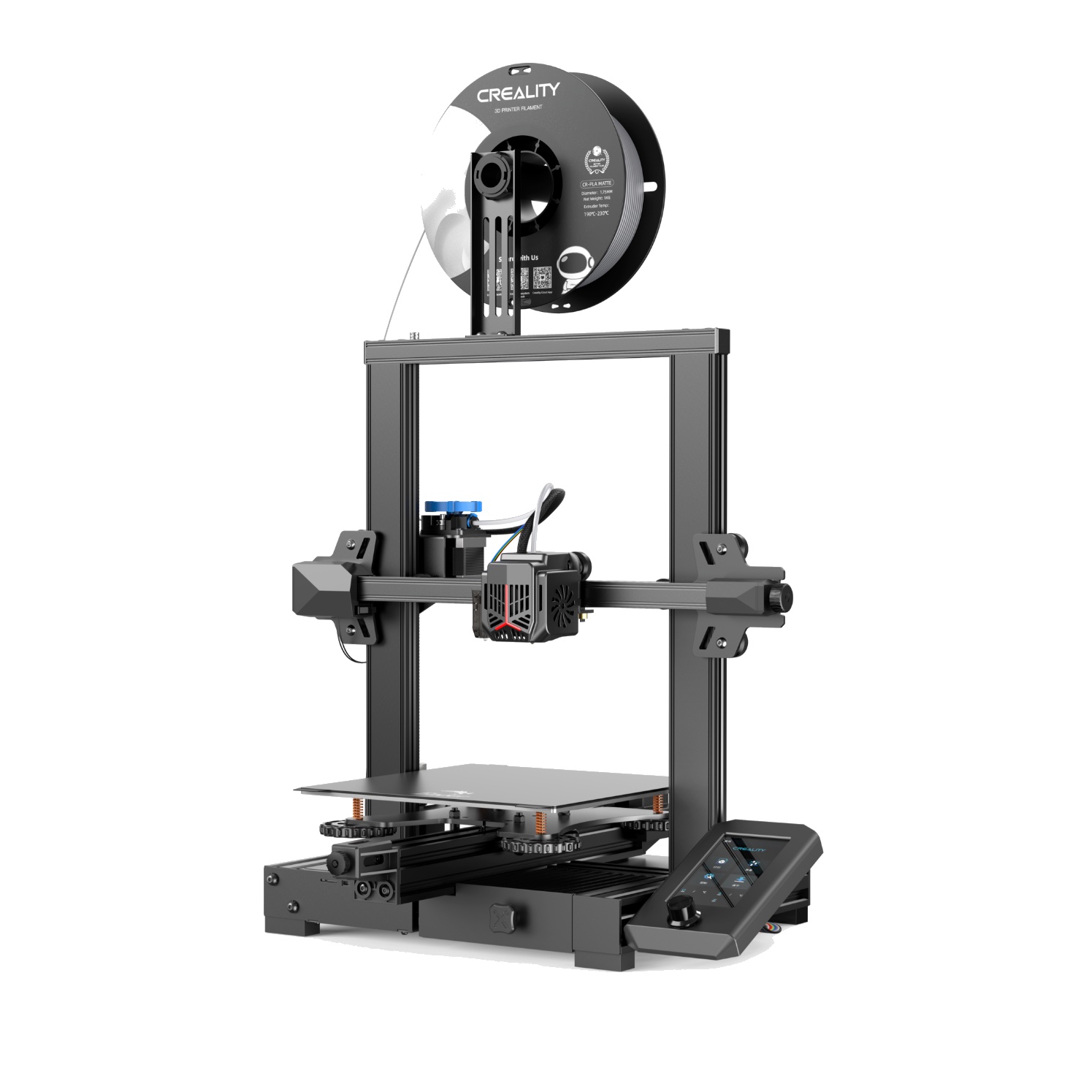Compare CR 6 Max vs Ender 3 V2 Neo
Comparison between the best 3D printers
Choose the best 3D printer at the best price. The cheapest 3D printers are here.
Buy a 3D printer here with 3D Fila.
 |
 |
|
| Model | CR 6 Max |
Ender 3 V2 Neo[BUY Ender 3 V2 Neo] |
| Printing Material | Filament | Filament |
| Buy Filament for Creality 3D CR 6 Max | Buy Filament forCreality 3D Ender 3 V2 Neo | |
| Estimated price | $700,00 | $310,00 |
| Manufacturer | Creality 3D | Creality 3D |
| Release Year | 2021 | 2022 |
| Print Volume [mm] | 400x400x400 | 220x220x250 |
| Printer Size [mm] | 725x640x691 | 438x424x472 |
| Weight [kg] | 14 | 9,8 |
| Power Loss Recovery | YES | YES |
| Enclosed printer | NO | NO |
| Bed Leveling | Automatic | Automatic |
| Filament End Sensor | YES | YES |
| Bed type | Heated | Heated |
| Power supply system | Bowden | Bowden |
| Standard nozzle | 0,4 | 0,4 |
| Maximum Nozzle Temperature [°C] | 260 | 260 |
| Maximum Bed Temperature [°C] | 90 | 100 |
| Maximum printing speed [mm/s] | 100 | 80 |
| Filament holder | YES | YES |
| Camera for supervision | NO | NO |
| Recommended filaments | PLA, PETG | PLA, PETG |
| Recommended slicers | Cura, Simplify, Slic3r, IdeaMaker | Cura, Simplify, Slic3r, IdeaMaker |
| Maximum Resolution [mm] | 0,1 | 0,1 |
| Processor | 4.2.2 mainboard | |
| Display | Display touchscreen 4,3'' | Display touchscreen 4,3'' |
| Power Supply | 110/220V / 500W | |
| Connectivity | SD / USB | SD / USB |
| Operating systems | Windows, Mac, Linux | Windows, Mac, Linux |
| Date of registration in the system | 2022-11-04 | 2022-12-09 |
| Release date | 2021 | 2022 |
| Extra features | Crealitys CR-6 Max printer offers a large 400 x 400 x 400mm build area, perfect for larger projects without dividers. Its auto-leveling system and force sensor simplify setup. It has a 4.3-inch touchscreen and convenient features like a tool drawer and filament holder. Plus, its modular hotend, redesigned extruder, and silicon carbide-coated build plate improve print quality. | The Ender 3 V2 Neo printer stands out for its automatic bed leveling with the CR Touch system, ensuring high-quality initial layers. It features an all-metal Bowden extruder for increased durability and improved filament handling. Its flexible, PC-coated magnetic build plate makes it easy to remove prints and is durable and easy to clean. It also includes a new user interface with model preview and an updated gantry design. The Ender 3 V2 Neo maintains the same build volume and temperatures as the previous version, supporting popular filaments such as PLA and ABS. It features a quiet 32-bit mainboard and additional features such as a filament sensor, print recovery, simple 3-step assembly, an integrated toolbox, and belt tensioners. |
| Support for multiple colors and materials (AMS and CFS) | NO | NO |
Notes * |
||
| Cost-benefit | 6 / 10 | 6 / 10 |
| Hardware | 2 / 10 | 2.4 / 10 |
| Tela | . | . |
| Print volume | 4 / 10 | 3 / 10 |
| Performance | 1 / 10 | 0 / 10 |
| [BUY Ender 3 V2 Neo] |
Conclusion |
| In comparing the CR 6 Max and the Ender 3 V2 Neo, several key points emerge that can help potential buyers make an informed decision. The CR 6 Max boasts a larger print volume, enabling users to take on bigger projects, which can be a significant advantage for those aiming to create larger models or multiple prints simultaneously. This printer also features a more robust design with improved modular components, promising better print quality. However, it comes at a higher price point. On the other hand, the Ender 3 V2 Neo presents itself as a more budget-friendly option without compromising essential features like automatic bed leveling and a user-friendly interface. Its smaller build volume may limit the size of projects one can undertake, but it still supports popular filaments and includes a convenient flexible build plate for easy print removal. The cost-effectiveness and ease of use make it a suitable choice for hobbyists or those just starting in 3D printing. Overall, if one’s priority is larger print capacity and potential for enhanced print quality, the CR 6 Max may be the appropriate choice despite the higher price. Conversely, for users who need a reliable printer at a more affordable price, the Ender 3 V2 Neo stands out as an excellent option, particularly for smaller projects or beginners looking to explore 3D printing without a significant financial commitment. The decision will ultimately depend on budget constraints and specific printing needs. |

